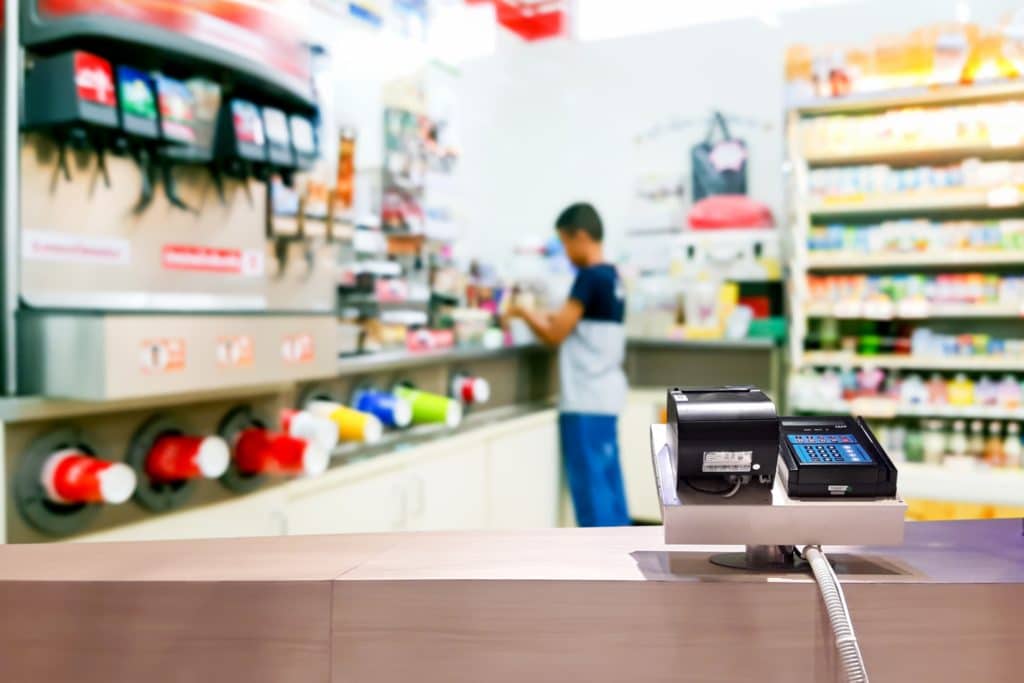Think before you leap with edge computing in convenience stores: Intel podcast

A podcast episode hosted by Intel says the convenience store industry should focus on their foundation and fundamentals like having sufficient bandwidth, network reliability, and security before running with edge solutions.
Intel’s Kristen Call, sales specialist; and John Klafin, convenience store industry marketing manager for its Internet of Things Group, outlined how convenience stores can best tap into the benefits of edge computing while remaining cost-effective for the company’s ‘To the Edge and Beyond,’ podcast.
Call, who has a family background in convenience stores, says the industry is overcoming their fear of technology and taking up edge solutions. “We’re starting to see a lot more of the industry diving into how to make their businesses smarter.”
As a latecomer to edge solutions, Call says convenience stores can learn from the mistakes of other industries and adapt to the challenge unique to them. Rather than use Internet of Things (IoT) platforms for, “I want a solution to do X and a solution that does Y,” which often ends with two solutions that do not share with each other and ends up raising costs, she recommends a different approach. She cites recent IoT applications integrated into the gas stations, registers, and coolers of convenience stores which can be leveraged for customer intelligence to enhance the experience like with drive-throughs and loyalty programs.
Klafin lists other edge innovations in convenience stores, like computer vision, artificial intelligence (AI), and IoT applications. With the COVID-19 pandemic, he gives the example of convenience stores that implemented cameras with temperature monitoring that detects fevers, density monitoring, and people counting to compensate for the lack of staff that convenience stores often have compared to big retailers. There are also insights to be gathered from edge solutions, like the demand for quick delivery, frictionless and touchless shopping, and drive-throughs.
Both of the participants heavily emphasized the benefit of acquiring customer data from edge solutions. Call says the “whole reason” why AI is implemented in convenience stores in the first place is to gain new insights and see “things we don’t always see” about customers and sales.
Retailers struggle with “unlimited amounts of data,” Klafin says. But edge platforms allow retailers and convenience stores to convert the data into business intelligence. He says convenience stores are fond of loyalty programs, and leveraging that in a retail environment grants new insights into customer demands and expectations.
AI helps with customer experience – if you know your customer
One example he gives is a sponsored experiment in a small bar in Atlanta, Georgia, that installed a dynamic content digital sign. It adjusted its menu catered to a specific demographic that stood in front of it, which uplifted sales by 800 percent for males. But it showed no difference in sales for women due to improperly understanding their needs. Klafin says you still have to prove you can meet customer demands with edge tech.
For convenience stores rolling out edge solutions, Klafin suggests considering bandwidth limitations, as operators likely won’t have sufficient bandwidth to send everything through the cloud, particularly video. “Bandwidth is not your first consideration until you run out of it,” he says.
Call recommends ensuring that convenience stores have a system that can be contained and isn’t dependent on an internet connection or the cloud, in cases where the power goes down or faces a choppy internet connection. Having this security means the business can continue as usual and not impact customers, she concludes.
The two Intel employees mentioned their company’s efforts to integrate into convenience stores with open source technology that gives flexibility, like its EdgeX Foundry (which was recently updated). There is also Intel’s IoT Group that manages an ecosystem of partners and works with retailers on their needs and priorities.
Because convenience stores are late to edge solutions due to limited budgets, Klafin finds that they want proven return on investment when adopting the technology. Rather than jumping ahead in adopting every edge solution at once, he advises them to focus on foundations and the connected edge platform first to budget in flexibility and scalability. “Sooner or later you run out of space, and it’s costly.”
Call’s advice is for independent software vendors to speak the language of convenience stores, like understanding the importance of when they will get their return on investment.
Article Topics
application development | computer vision | convenience stores | edge AI | Intel | retail


Comments